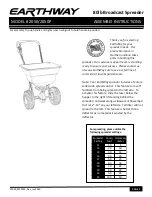
Page 6
4.4 Installation instructions
The reader uses passive RF/ID technology, which is sensitive to RF noise sources. Noise
sources are generally of two types: radiating or conducting.
Conducted noise enters the reader via wires from the power supply or the host.
Sometimes, switching power supplies generate enough noise to cause reader malfunction,
it is recommended to use linear system power supplies.
Radiated noise is transmitted through the air. It can be caused by computer monitors or
other electrical equipment generating electromagnetic fields.
Consequently, a short distance between the readers themselves can cause reading
malfunctions – for correct operation it is necessary to keep a minimum distance of 50 cm.
Various metallic constructions may have a negative influence on this distance; if there are
any doubts, it is recommended to perform a practical test before final mounting.
Nearby metal surfaces may cause a decrease in reading distance and speed. This is
caused by the combined effects of parasitic capacitance and conductance.
Mutual disturbance of a couple of TECHFASS devices (standard 125 kHz system reader
module + Wiegand output reader) can be avoided by setting up the reading
synchronization (see reader configuration chapter). The synchronization is ensured by
periodic sending of a special signal via Wiegand interface from the Wiegand output
reader to the standard system reader module. There is no need to connect any other
wires or make any special configuration on the TECHFASS system reader module.



























